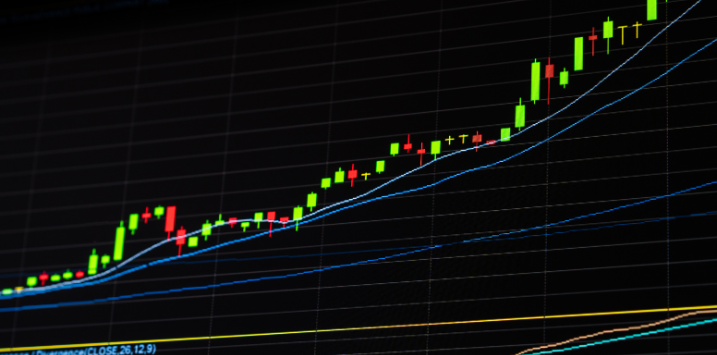
Beyond the next bull market
As you have probably garnered by now, I am optimistic about the prospects for equity markets for the remainder of 2024 and for all of 2025. I believe a process of risk adoption is underway, reversing the conservative stance that dominated sentiment in 2022 and most of 2023 amid fears of rising interest rates and recession. With the subsequent side-stepping of recession along with the acceptance that rates have probably peaked, and with slow deflation continuing, investor appetite for risk can begin to improve.
The process of investors accepting a more optimistic outlook and then acting on it takes time because there’s inertia, the change isn’t accepted by all investors all at once, and some investors need to see rising share prices before jumping aboard. It could take a couple of years for most investors to be bullish again. From the beginning of the change in outlook, a two-year process of ‘bullish adoption’ would take us to early 2026.
Speculating future market disruptions
And then what? Assuming a bull run in equities out to 2026, what could knock it back down again? A crash in 2027 would mark the 40th anniversary of the 1987 crash. While all of this is pure speculation (don’t base your investment strategy on it), it is interesting to consider developments and expert insights that have the potential to disrupt a bull run in 2026 or 2027.
To that end, a recent interview published in The Australian with Mike Pezzullo, one of Australia’s foremost authorities on China, offers a dual perspective on the current state of Sino-Australian relations.
China’s military and Sino-Australian tensions
Pezzullo’s insights carry significant weight given his extensive background, including his tenure as the secretary of the Department of Home Affairs and his role in authoring the 2009 defence white paper, which first underscored the military threat posed by a rising China. Despite the ambitious promises of that white paper, including the expansion of Australia’s submarine fleet and acquisition of new frigates and patrol boats, political will and action failed to materialise. This inaction has coincided with China’s massive military build-up and increasingly aggressive regional behaviour.
No plaudits will flow to those who predict a Chinese invasion of Taiwan would cause an equity market crash. Investors would panic amid fears a conventional conflict between the U.S. and its allies and China could expand to a nuclear one.
Following the recent ‘hazing’ of an Australian military helicopter by a Chinese Communist Party (CCP) jet over international waters, Pezzullo highlights China’s frustration and puzzlement over Australia’s refusal to succumb to military intimidation despite the significant disparity in defence capabilities between the two nations.
For clarity, the latest incident involved a Chinese jet dangerously dropping flares above and ahead of an Australian naval helicopter in the Yellow Sea. This is part of Beijing’s long-term strategy to push middle powers out of northeast Asia. Pezzullo notes that this aggressive behaviour is backfiring as Australia continues its patrols in the South China Sea, defying Chinese pressure.
However, Pezzullo draws a striking analogy to the movie “Jaws,” likening China’s military rise to the threat of a great white shark, necessitating a “bigger boat” for our defence. He acknowledges that his warnings from a 2009 white paper have been validated and even accelerated since Xi Jinping came to power, particularly noting CIA Director William Burns’ 2023 comments about China’s military readiness for a potential invasion of Taiwan by 2027.
On this score, The Australian quotes China’s Xi instructing his country’s military to be “ready by 2027 to conduct a successful invasion” of Taiwan.
Pezzullo also delivered sobering news about Australia’s overall defence strategy and capabilities. Despite Australia’s commendable resilience against Chinese intimidation, Pezzullo expresses deep concern over our long-term preparedness in the face of an escalating China threat. He criticises the failure to expand Australia’s defence forces over the past 15 years, leaving the Australian Defence Force (ADF) optimised for low-level conflict scenarios rather than substantial, high-stakes confrontations. Pezzullo warns that in a major conflict, Australia would struggle to defend itself without significant support from the U.S., highlighting deficiencies in areas like missile defence.
Reflecting on the past decade, Pezzullo points to political instability and infighting within Australian governments as key factors that distracted from necessary defence reforms. He emphasises the need to look forward and address the current security challenges with what resources are available. In his upcoming paper, “The Long Arc of Australian Defence Strategy,” Pezzullo marks 2006-07 as the turning point when China’s military ambitions became more apparent to the Australian defence establishment.
Pezzullo underscores the criticality of U.S. military support in any conflict involving China, stressing that Australia would likely become a combatant if China were to attack Taiwan. He puts the chances of a major conflict involving China at no more than 10 per cent currently but is gravely concerned about Australia’s readiness for such a scenario.
Pezzullo criticises the failure to evolve Australia’s defence capabilities, noting that the current force structure has remained largely unchanged since the 1980s despite technological advancements. He highlights the inadequacies in missile defence and the overall reliance on U.S. support, which contradicts the long-standing goal of defence self-reliance. He calls for a substantial increase in defence spending to at least three per cent of gross domestic product (GDP) to build a more robust and self-reliant military force.
Pezzullo expresses some optimism about recent steps taken by the Morrison and Albanese governments to address defence shortcomings, including the Aukus agreement for acquiring nuclear-powered submarines. However, he stresses the need for a sustained and accelerated effort to enhance Australia’s defence capabilities to meet the looming challenges posed by China’s rise.
Putting aside the urgent calls for significant enhancements in Australia’s defence preparedness to ensure long-term security and self-reliance, investors will need to begin watching U.S.-Sino developments closely, especially as the bull market I am forecasting will see many investors drop their own defences.